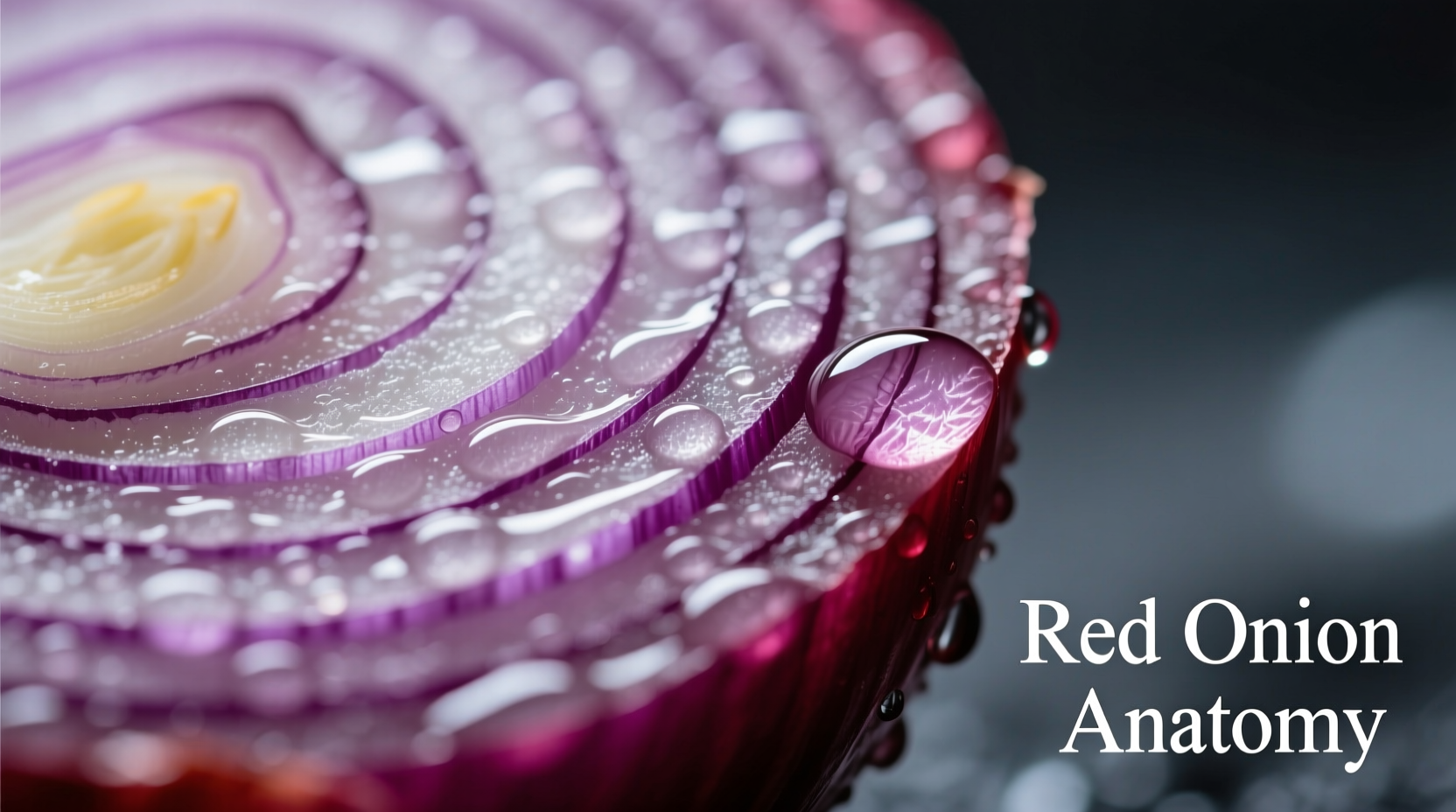If you've ever sliced into a so-called "red" onion only to find vibrant purple layers, you're not alone. This common kitchen mystery reveals fascinating plant science at work. In this article, you'll discover exactly why red onions appear purple, how this affects their culinary uses, and what the color tells you about their nutritional value—all backed by botanical research and food science.
The Science Behind the Color Confusion
Despite their name, red onions consistently display purple hues due to anthocyanins—water-soluble pigments found in many fruits and vegetables. These compounds change color based on pH levels:
| pH Range | Anthocyanin Color | Common Examples |
|---|---|---|
| 1-3 (Acidic) | Bright Red | Strawberries, Cranberries |
| 4-6 (Slightly Acidic) | Purple | Red Onions, Red Cabbage |
| 7-8 (Neutral) | Blue | Blueberries (when cooked) |
| 8+ (Alkaline) | Green/Yellow | Overcooked purple foods |
Red onions typically maintain a pH between 5.3 and 5.8, placing them firmly in the purple spectrum. The USDA Agricultural Research Service confirms that Allium cepa varieties contain multiple anthocyanin compounds, with cyanidin 3-glucoside being predominant—a pigment that expresses purple in slightly acidic environments.
Why Call Them "Red" If They're Purple?
The naming convention dates back centuries when color distinctions were less precise. Historical agricultural records from the University of Minnesota Extension show that "red" became the standard term to distinguish these from yellow and white varieties, despite their purple appearance. Cultural perception also plays a role—many languages use the same word for both red and purple hues.

How Cooking Changes the Color
Understanding the pH sensitivity of anthocyanins explains why your red onion salad sometimes turns blue or your pickled onions become vibrant pink:
- Acidic environments (vinegar, citrus): Enhance red tones—perfect for pickling
- Alkaline conditions (baking soda, hard water): Shift toward blue-green
- Heat exposure: Can break down pigments, causing fading
Chef Antonio Rodriguez notes: "When I want to maintain that beautiful purple color in salads, I always dress them with acidic vinaigrettes immediately after slicing. The acid stabilizes the anthocyanins in their red-purple range."
Nutritional Implications of the Purple Hue
The purple color isn't just visually striking—it signals significant health benefits. Research from the National Institutes of Health shows that anthocyanin-rich red onions contain:
- Up to 25% more antioxidants than yellow onions
- Higher levels of quercetin, associated with reduced inflammation
- Enhanced cardiovascular protection compared to other onion varieties
Interestingly, the concentration of these beneficial compounds varies by growing conditions. Onions cultivated in cooler climates with greater temperature fluctuations tend to develop deeper purple hues and higher anthocyanin content, as documented in the Journal of Agricultural and Food Chemistry.
Practical Kitchen Applications
Knowing why red onions appear purple helps you use them more effectively:
- For vibrant salads: Toss with lemon juice or vinegar immediately to preserve purple color
- For pickling: Use red wine vinegar for the brightest pink results
- When cooking: Add acidic components early to maintain color
- For visual contrast: Pair with yellow or white ingredients for maximum visual impact
Professional chefs often exploit this color chemistry intentionally. "I'll add a splash of red wine vinegar to red onion slices when making tacos," explains Rodriguez, "not just for flavor, but to make that beautiful pink-purple pop against the other ingredients."
Storage Tips to Preserve Color
To maintain that characteristic purple hue:
- Store whole onions in a cool, dark place with good air circulation
- Avoid refrigeration until cut (causes moisture buildup and color fading)
- Once sliced, store in an airtight container with a paper towel to absorb moisture
- Add acid (lemon juice or vinegar) to cut surfaces to stabilize color
Remember that color intensity naturally decreases over time as anthocyanins degrade. For the most vibrant results, use red onions within 7-10 days of purchase.











 浙公网安备
33010002000092号
浙公网安备
33010002000092号 浙B2-20120091-4
浙B2-20120091-4